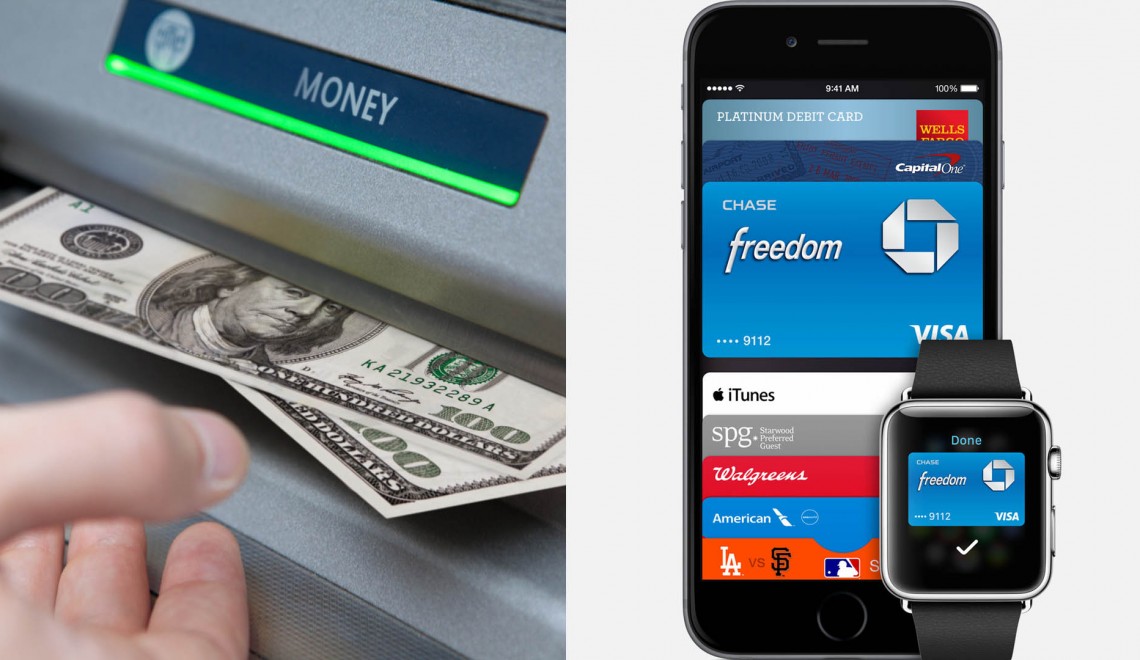We spend a lot of time at Circuits And Cable Knit speculating on the future of fashion, wearables, and retail tech. What might be possible, what might catch on, and what won’t we be able to live without. There is one thing that is not up for discussion through: the way we pay for things will change. And today is the day that the change begins. Starting October 1st, retailers are now liable for any fraud that is the result of a magnetically swiped charge card.
You might have noticed over the past year that all of your credit cards have been replaced with a version featuring a chip on the front left side. This is called an EMV chip (an acronym of it’s creators Europay, MasterCard and Visa) and retailers will now be asking you to use it instead of simply running your card through the magnetic reader. EMV chips have been common place for decades on charge cards around the globe but not in the US. Banks have been hesitant to push users toward the tech because, while it is more secure than our current magnetic swipe system, it is more complex and cumbersome and requires new payment terminals. But with the US ranking as one of the leading country of credit card fraud, banks are now willing to force the change.
There are two implementations of how an EMV equipped card can be used.
With either method, the user inserts their credit card into a slot on the payment terminal. In the US we will be adopting a “chip & signature” system. After the data on the EMV is read, the user then signs for the transaction as normal. While this system is more secure than a magnetic swipe, since the data on the chip can not be lifted easily, if your card is stolen card it can still easily be used. Europe uses the second, more secure, implantation of the EMV chip. They utilize a “chip & PIN” system. After inserting a credit card, a PIN must be entered by the card owner to authorize the transaction; there is no signature needed. The PIN is hard programmed onto the card’s EMV and is different than a user’s ATM PIN. While the US is starting with a “chip & signature” system, banks are planning to eventually move users to a “chip & PIN system” but did not want to introduce too much change at once.
While EMV chip based payments might seem to be little more than a behavioral change, there are two big downsides. First, retailers must invest in new payment terminals. This is not an inexpensive proposition. A new payment terminal with EMV technology starts at around $500. If you have several payment terminals, or are a large company with thousands and thousands of terminals, this quickly becomes a huge expense. Granted, since retailers are now liable for fraudulent charges from swiped cards, the cost of the new terminals is a sound investment. Second, it is SLOW. The process of swiping your card to pay takes only a few seconds. With an EMV chip, it takes anywhere from 20 to 30 seconds. It isn’t as slow as writing a check, but it is painfully tedious. Also, the card needs to be inserted when you sign, creating a perfect storm to forget your card in the register.
EMV chip payments are a no brainer for banks and retailers, but what is in it for consumers. The answer is surprisingly: not a lot. Consumers are typically not liable for fraudulent credit card charges, so we are left with a system that is slower (resulting in slower check-out lines) and more complex just so other entities can protect themselves.
There is actually one “win” for consumers: timing. The US waited just long enough to adopt EMV chip payments that most of the new payment terminals installed over the past 18 months also include NFC, and banks couldn’t be happier. While “chip & signature” payments are far more secure than magnetic swipe, they can’t even be compared to tokenized mobile payments. Apple Pay, Android Pay, and Samsung Pay (well, their NFC portion), offer an unparalleled level of fraud prevention. They require a user’s fingerprint and use a randomly created card number. These systems aren’t just safe, they are comparable in ease and speed to swiping your card; if you have a supported smartwatch it can be even faster! Also technologies such as Apple Pay provide tokenized online payments through your phone & tablet.
In the US the way we pay for things is shifting for the first time in over 4 decades. There is a line in the sand, and today is the first day of the change. The only question is what payment system will we land on. With EMV chip credit cards already issued, that is the path of least resistance. But given the inconvenience of “chip & signature” there is a chance that users will decide to jump directly to mobile based payments. Technologies such as Apple Pay and Android Pay seem like the more logical path forward, offering both convenience and security. With users having to adapt to a new payment process the only question is if mobile payments are mature enough to be viable for a large amount of people.





